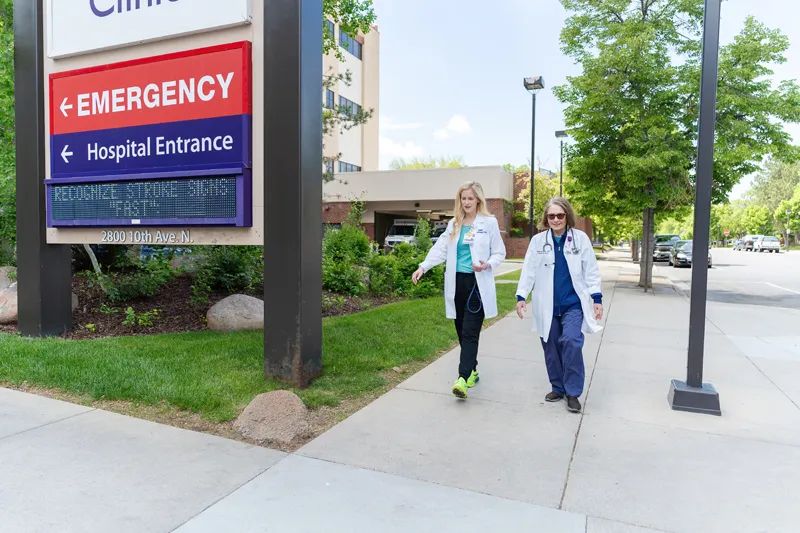
Two docs and two generations thrive on emergency medicine
Billings Clinic’s Emergency Department marks a milestone
Dr. Barbara Curry was still in medical school when Billings Clinic established its emergency department in 1975. As for Dr. Jamiee Belsky, who currently chairs the Clinic’s emergency department, it would be more than a decade before she was even born. Separated by a generation, these two ER physicians share a passion for emergency medicine as the Clinic’s ED celebrates its golden anniversary.
Fifty years ago, Billings Clinic was known as Deaconess, the United States had just pulled out of Vietnam, and the movie “Jaws” had just hit the box office. Jumpsuits and bell bottoms were trending when Dr. Curry represented another trend: women in medicine.
Although Dr. Curry wasn’t there when Deaconess’ emergency department was established, she has played a key role in its growth and development for the past 35 years.
Since her arrival in 1990, she’s witnessed major changes in the emergency room. Patient numbers have risen from roughly 17,000 per year to nearly 53,000 – making it the busiest ER in the state. Simultaneously, she’s seen the number of ER docs swell from five to almost 20.
The trends in emergencies, too, have shifted.
“When I first came, the only violence I remember seeing in the emergency department was a police officer who was killed in the line of duty,” she says. “But murder and random violence? No. And there wasn’t a drug trade.”
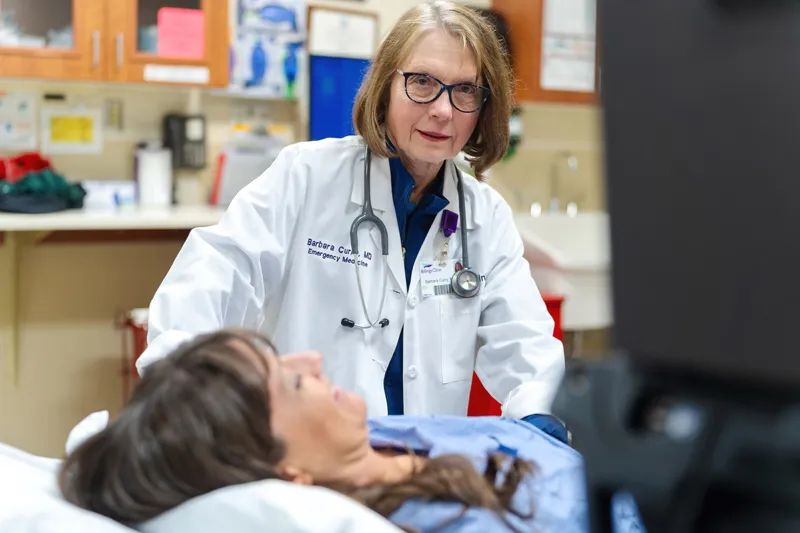
She’s also witnessed major advances over the years — among them the department’s cardiac and stroke care, its pediatric readiness, and its capability to perform ultrasounds, MRIs, and PET scans. Most recently, last year, the ER earned its designation as a Level I Trauma Care Center — the gold standard for care.
“We’ve come a long way,” she says.
During her thousands of shifts in the ER, Dr. Curry has seen just about everything imaginable. And that’s exactly how she likes it.
“It was really important to me to use everything that I’d learned in my training,” she says. “I’m a crisis-oriented person anyway. It suited my lifestyle. And to this day, I still use everything I learned.”
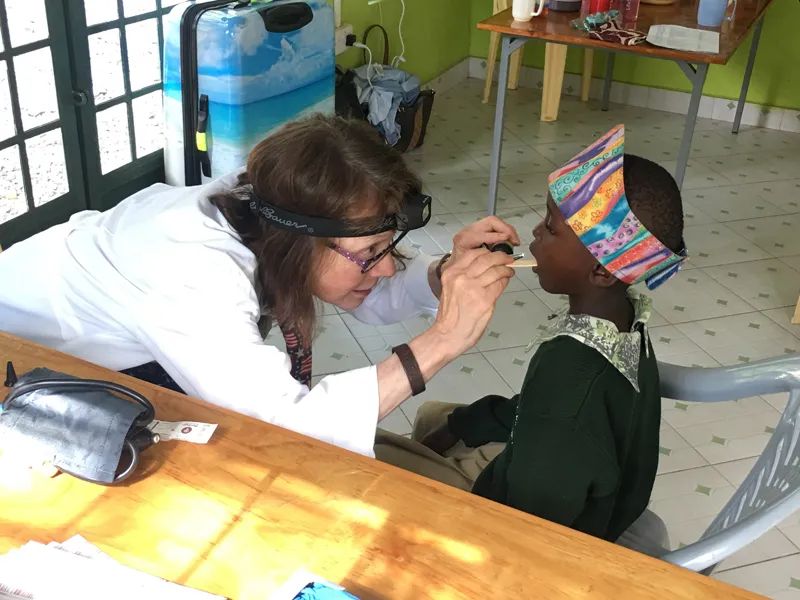
Even after decades in emergency medicine, her patients continue to inspire her.
“Nobody comes to see me because their day is going well,” she says. “Just watching how people react and process unexpected events in their lives has been a continuing source of inspiration for me, especially the way that many patients with seemingly unbearable burdens carry those burdens with extraordinary grace and courage.”
Dr. Curry has faced her own challenges with grace, courage, and a fierce determination. That determination served her well, first as a nursing school student and later as one of the early wave of women in medicine.
Back in the early 1970s, Dr. Curry — then a nursing school student — could never have envisioned herself as a doctor. At that time, 98 percent of medical school slots were reserved for men. Yet her nursing school professors encouraged her to reconsider her career path and focus on medical school.
“They saw something in me that I didn’t see,” she says.
But still, the idea seemed insurmountable — until serendipity came into the equation. The legislature in Virginia, where Dr. Curry was studying, passed a bill requiring 20 percent of medical school admissions to go to qualified women. That meant, instead of six or eight openings at the state’s schools, there would be 60. Though the break was perfectly timed, acceptance was never a given. She applied three times before being admitted.
She laughs at the turn that seemingly landed her the job. After her mother sent her an article titled, “How to Dress for a Medical School Interview,” Dr. Curry remembers making herself a calf-length, mustard-yellow dress. She bought a pair of clear-lensed, wire-rimmed glasses at the local Woolworth’s and then pinned her long hair up into a bun.
“I took the bus and went for the interview in my dowdy dress and wire-rims and hoped for the best,” she says.
When a large packet arrived in the mail — a packet that required her signature — she knew she’d made it.
“My life had just changed forever,” she says.
Still, the challenges persisted. Back then, it was presumed — and verbalized — that a woman accepted into medical school would soon quit to raise a family, thus taking the place of a man who would practice for a lifetime.
“That weighed heavy on me,” she says. “That governed my decisions through the course of my life.”
Dr. Curry was practicing as an internist. “Emergency medicine wasn’t even a field then or I probably would have picked it,” she says. That’s when she again found the timing to be perfect. A new field in emergency medicine had just been recognized, and a new path allowed for internists with four years of experience to take the boards for that specialty.
“And I passed,” she says.

More than 40 years later, she smiles as she describes herself as being “trained on the fly” in a profession that she likens to detective work.
“You’re trying to figure out the cause of the patient’s symptoms and how best to treat them,” she says.
But what brought Dr. Curry to Montana? The Maryland native was working in the Fairfax Hospital in Virginia when she received a mailing about a job opening in Billings. She’d passed through the Magic City once before and had fond memories of enjoying a picnic lunch on the courthouse lawn.
“It was the ‘Last Best Place,’” she says, smiling. “My husband wanted to go to a place where there were more fish than people.”
When she arrived in 1990, she was struck by Deaconess’ shortage of staff and resources.
The department had only five doctors, Dr. Curry being the only woman.
Within two years, however, the hospital had earned its rating as a Level II Trauma Center — the first in Montana — and was on a mission to move forward.
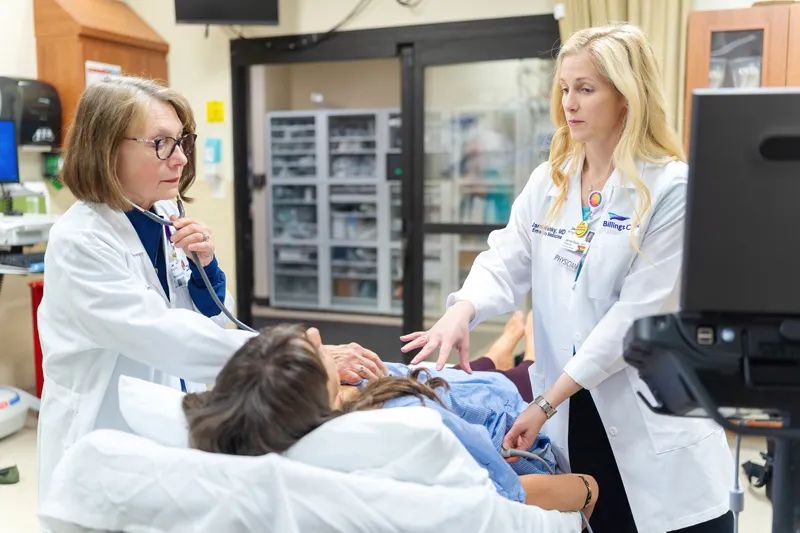
While Dr. Curry was the first female physician in Deaconess’ emergency room, she was certainly not the last. Dr. Belsky, now chair of the department, was a small girl growing up in Florida when Dr. Curry arrived in Billings.
She and her husband, also a physician, were similarly enticed to Montana after receiving a postcard about job openings at Billings Clinic — a postcard showing a photo of Glacier National Park.
“We asked ourselves, ‘Do we want to live here?’” she remembers. “Do they even have an ER?” The couple flew out and fell in love with the place. That was six years ago.
During an interview with Dr. Nathan Allen, then head of the emergency department, Dr. Belsky described her goals: to be more involved with the department and to work her way into a chair position like his.
“Two and a half years later, I was chair,” she says.
Besides chairing the emergency department, she currently serves as president-elect of the Montana chapter of the American College of Emergency Physicians.
Yet, while some things change, others remain the same.
Dr. Belsky, too, had been cautioned not to squander her spot in medical school — a spot that could have gone to a man.
“He (a physician) actually said that to me,” she recalls. “And that was in the 2010s.”

Incidentally, both physicians went on to marry and have families. Dr. Curry has two grown children, and Dr. Belsky has a son, nearly 20 months old. And women now make up half of medical school graduates. And, yes, they raise families and continue to practice.
At Billings Clinic, Dr. Belsky takes pride in the hospital’s support of young families, noting that, over the past three years, three of the ER’s women physicians have given birth and been able to take their full maternity leave.
Today, the two emergency room physicians — separated by a generation — share ideas, insights, and camaraderie. They banter about approaches as they challenge one another.
“The newbies are minimalists,” Dr. Curry says. “They tend to worry about ordering too many tests. But, as time goes by, that changes. With five minutes (to see a patient), I am going to employ everything I have at my disposal. I have to be right.”
Dr Belsky admits that her approach has moderated over time.
“I definitely order more tests,” she says, smiling. She also relies on Dr. Curry’s institutional knowledge and her experience dealing with patients, staff, and even other department heads.
“Her personal insight is extremely valuable,” Dr. Belsky says. “And if I need something to get done and get it done right, Barb is the one I go to.”
Likewise, Dr. Curry praises her younger colleague as “extraordinarily skilled.”
“Dr. Belsky has been a driving force for advances in our day-to-day emergency practice here at the Clinic,” she says.
As both strive for the best in emergency care, they look forward to new technologies that benefit both patients and physicians.
“I can now perform bedside ultrasounds (in the ER),” Dr. Belsky says. “I don’t have to wait. It’s streamlined the process so you get the definitive care you need faster.”
They also look forward to an expansion of Billings Clinic’s ED, scheduled two years from now.
Yet, despite all the advances, the future of emergency medicine still comes down to the people who care.
“There’s something special at the Clinic in our ability to connect with other services, to talk to providers in other departments,” Dr. Belsky says. “You know who you’re calling at the other end of the phone. We all live here. It matters.”
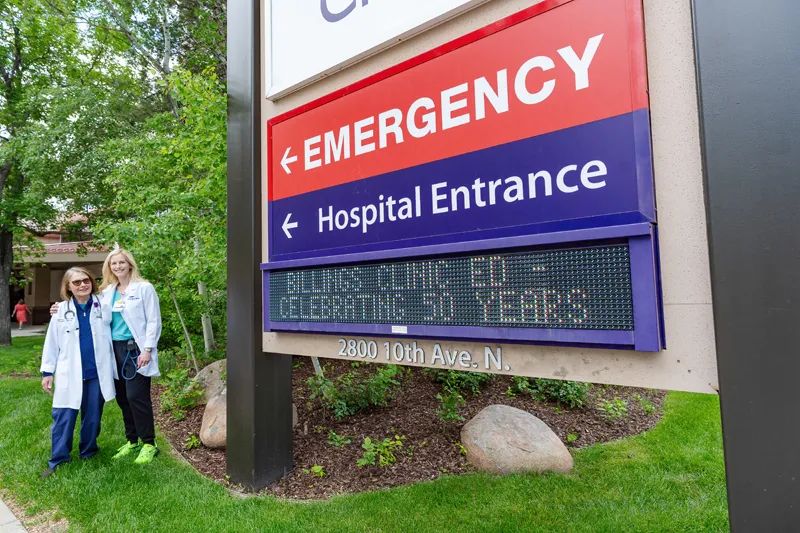
Facts
Before ERs, most hospitals had a bell at the back door that could be rung for assistance during off hours.
1979 was the first year that emergency medicine was recognized as a specialty.
In 1992, Billings Clinic earned Level II Trauma Center verification, the first in the state.
In 2024, Billings Clinic Emergency Department earned its Level I Trauma Center designation — the first in Montana or Wyoming to do so.











